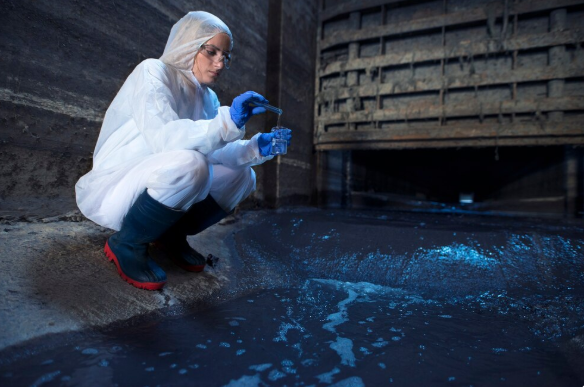Moisture might seem harmless at first glance, but when it finds its way into a building’s structure, it can lead to serious and expensive problems. That’s where waterproofing comes in. Simply put, it is a method of protecting buildings from water intrusion by applying barriers or systems that resist or redirect water flow.
Think of your home as a shield. Without proper moisture protection, that shield slowly corrodes from within. Over time, even a minor leak can evolve into mold infestations, crumbling concrete, rusted beams, and weakened foundations.
Beyond the structural concerns, damp conditions can also impact indoor air quality and overall health. Prolonged moisture encourages the development of mold, which is known to trigger allergies, aggravate asthma, and lead to other respiratory problems. This is especially true for below-ground spaces like basements, where airflow is limited. In such cases, implementing effective Interior Basement Waterproofing can help control humidity levels and prevent these health risks from escalating.
Water infiltration also affects energy efficiency. Wet insulation loses its thermal properties, causing heating and cooling systems to work harder, which increases utility bills and environmental impact.
Internal vs. external waterproofing: key differences
When it comes to preventing water from invading a structure, there are two main strategies: external and internal moisture control systems.
External waterproofing acts like a protective skin wrapped around the outside of a building. Typically installed during construction or major renovation, it involves excavating soil around the foundation and applying membranes, coatings, or drainage panels. Its main job is to prevent water from ever making contact with the structural components.
Internal waterproofing, on the other hand, is installed from the inside. It doesn’t stop water from reaching the foundation but manages it after entry. Through the use of sump pumps, interior drainage channels, and moisture-resistant coatings, it redirects water away from the living space, preventing pooling and reducing humidity.
Both systems serve specific purposes. External methods are preventive and ideal for new builds or where long-term protection against groundwater is essential. Internal systems are more accessible for existing buildings and act as a reactive yet effective solution.
How to choose the right waterproofing for your needs
Choosing the appropriate moisture protection system is not always straightforward. It depends on the building’s age, location, soil conditions, and the source of the water issue.
If your home is located in an area with a high water table or sees frequent heavy rainfall, external protection might be a smart investment. However, in cities where homes are closely packed, digging around a foundation is often impractical or prohibited. In such cases, an interior system becomes the logical choice.
Cost is another critical factor. Internal systems are generally more budget-friendly, costing less in materials and labor. They’re also quicker to install and cause minimal disruption to your landscaping or exterior finishes.
Finally, the purpose of the space matters. If you’re planning to turn your basement into a living area, a dry and mold-free environment is crucial. Internal systems can provide this without altering the building’s external appearance or structure.
Advantages of internal waterproofing
Internal moisture control systems offer several compelling benefits:
- Affordability: Compared to external systems, interior solutions are significantly less expensive while still offering solid protection.
- Non-invasive installation: No excavation means your yard, driveway, or garden remains untouched.
- Speed and convenience: Most projects can be completed in a matter of days, without requiring you to vacate the home.
- Ideal for retrofitting: For finished basements or properties with no exterior access, interior options are often the only feasible solution.
- Versatile protection: Interior systems handle a wide range of issues, including condensation, seepage through basement walls, and capillary moisture.
Does internal waterproofing really work? Understanding its limits
Interior methods are particularly useful when dealing with issues like mild seepage or elevated humidity levels in basement areas. They work well in finished spaces, helping to keep interiors dry without the need for major construction. Still, while they offer practical support in many scenarios, it’s important to understand their limitations. Exploring the full scope of Interior Basement Waterproofing Benefits can help homeowners decide if this approach aligns with their specific needs and conditions.
If your foundation suffers from serious cracks or you’re dealing with hydrostatic pressure—water pushing forcefully against your walls from the outside—an internal system alone may not be enough. In such scenarios, pairing interior systems with sump pumps and a proper exterior drainage network enhances overall protection.
Maintenance also plays a role. An interior system’s effectiveness depends on how well it is installed and whether it is monitored over time. Regular inspections and cleaning of sump pumps, for example, ensure long-term performance.



